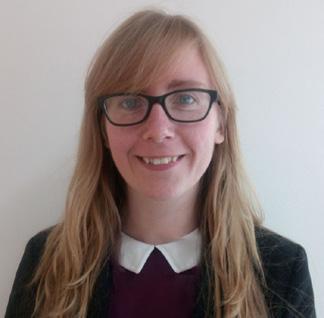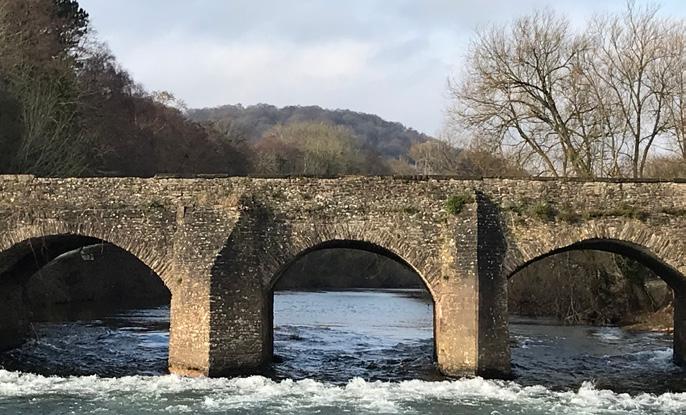
5 minute read
Diversity
COGNITIVE DIVERSITY

Advertisement
by Angela Day
Head of People, MOSL
When we think of diversity, the things that often jump into our head are diverse characteristics such as gender, race and age, but how often do we think about cognitive diversity? Cognitive diversity relates to the differences in the way we process information and communicate with others. If we learn to embrace these cognitive differences to build diverse teams, it can led to better ways of working, greater productivity and give our organisations a competitive edge. Over the last year I have been rolling out Insights Discovery to my MOSL colleagues. Insights Discovery helps people understand themselves and their colleagues so that they can have more productive and positive working relationships.
The Insights Discovery Model
The model is based on the work of psychologists Carl Jung and Jolande Jacobi and uses four colours to represent observable behavioural patterns which are measured by an online evaluator - a 25-frame questionnaire of statements from 100-word pairs which complete a personal profile.
From their personal profile, individuals can better understand their own behavioural and communication preferences, enabling them to connect better with colleagues. This can improve collaboration and support a common language to help overcome challenge and conflict. The simple and memorable four colour model helps people understand their style, their strengths, potential blind spots and the value they bring to the team.
I work hard to ensure that people don’t see their colour energies as ‘boxes’ or as a restriction to their potential. All of us have the four colour energies, we simply have higher preferences in some colours. We may have an introverted preference, or a thinking preference. We may lean towards a desire to work with facts and data, or a preference towards working with and getting energy from others.
What do we mean by ‘preferences’?
The best way to describe this is to use the following practical example. Cross your arms. Now uncross your arms and cross your arms again, but this time do it so that the arm that was on top is now under and the arm underneath is now on top. My guess is that you managed to do this, but that it took some thinking about and when you got there it felt strange and you wanted to revert back to the first way.
This is a preference. This exercise demonstrates that you can fold your arms differently, but to do so takes more conscious effort and feels a bit strange. It is the same with tapping into and dialling up those colour energies that are not our natural ‘go to’ place.
Interestingly however, when we are required to use those behaviours and communication styles that are our least preferred, we often do this very well. Why?
DIVERSITY
Because we need to invest energy and time in preparing for and doing something that isn’t comfortable to us, therefore, we tend to give it extra conscious attention. The downside to this is that although we may do it well, if we were required to do it on a frequent basis, it would most likely consume much of our energy. It may become stressful as we fight with our desire to revert to our more natural preferences.
The Insights Discovery Journey at MOSL has been part of Building Capability, one of the themes we laid out in our 2020/21 Business Plan.
A high level of self-awareness is the starting point to personal growth. To take the words of coaching pioneer, Sir John Whitmore, “I am able to control only that which I am aware of. That which I am unaware of controls me. Awareness empowers me”. Only when we understand ourselves, can we build on what that means for our relationships with others.
The MOSL team has a strong preference for ‘Cool Blue’ energy. Cool Blue is an introverted, thinking preference. This energy is associated with words such as objective, analytical, problem solving.
This is perhaps unsurprising, in an organisation which is at the centre of the non-household water market and works with data on a daily basis to provide meaningful insight. That said, however, MOSL is represented across colour energies. We are proud to say that not only are we a diverse organisation through our characteristics, but we are cognitively diverse too and we continue to grow as a learning organisation supported by diversity of our thoughts and ways of working.
If you would like to find out more about Insights Discovery or the colour preferences, I recommend the following resources: ■ Find out your preference at www.thecolourworks.com/what-colourpreference-are-you ■ Learn more about the colour energies and their associated behaviours at www.thecolourworks.com/insightsdiscovery-colour-types-guide ■ Really interested? Learn about the history behind the psychology that underpins the model at www.thecolourworks.com/ hippocrates-galen-the-four-humours
To find out more about MOSL visit
www.mosl.co.uk
SUPPORTING WOMEN IN WATER
Thank to you to everyone who completed our Women in Water survey in November last year.

by Clair Dunn
Head of Water Quality Anglian Water
We had a great response and the results of the survey will really help us to understand the barriers that women currently face in the industry and how the Institute of Water can best support them.
Currently 26% of our members are women and the percentage was found to reduce with age. Therefore, we are in the process of developing a programme to attract women in the water industry to become members of the Institute of Water and through our engagement with them support their careers. We aim to promote good practice and inclusivity for all across the industry and we hope there will be something in the programme for everyone!
Through events, networks and mentoring forums we want to celebrate the success of women in different roles across the industry. We hope you were able to attend the Eastern Area virtual event - ‘Supporting Women in Water’ on 4th and 5th March, in collaboration with British Water.
THE INSTITUTE OF WATER DIVERSITY, EQUALITY AND INCLUSION (DEI) SURVEY RESULTS ARE NOW IN!
Amongst the headline findings are the great strides in members who identify themselves as female, with almost double the representation of the water industry (37.5% compared to 20%). You can read the full DEI report on the Diversity page of the Institute of Water website.








